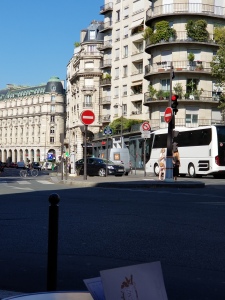That is no country for old men…
Whatever is begotten, born, and dies.
Along with everyone else, I now divide my life into the Before Times and After. After what? Before the ravages of corona virus. Before the isolation. Before the destruction of the economy. Before the nearly 5.5 million deaths worldwide. Before 822,000 deaths in the US. Before life was completely upended for everyone. Before businesses were forced to close—new businesses, long-established businesses, places you thought would always be part of the fabric of life—all gone. Some in a poof! Some after extended death rattles. But gone, nonetheless.
Thomas Wolfe was famous for saying, ‘You can’t go home again.’ I’m a New Yorker. I knew my city like the back of my hand. She was comforting and familiar. And exasperating. And irritating. And frustrating. And rewarding. And New York was home to me. In the words of Robert Frost, ‘Home is the place where, when you go there, they have to take you in.’
I always tried to get home with some frequency just for a visit. Sometimes to catch up with old friends, family, or just to catch an exhibit at the Met, a Broadway show, explore a restaurant—hang out, experience New York as it always was.
But now, there’s no going home. The virus has changed travel. The economic destruction wrought by the virus have so drastically changed the face of the city, that I don’t know what I will find even if I could travel there. I’ve lost my connection to home.
What will After be like? When I get back to New York, what will I find? What will I see? Will any of my favorite places still be there? What about the familiar ones? Will they be replaced by new places? Will the old places be reborn? Or just gone to dust and memory?
When I was a kid living in Brooklyn, I used to hang out at what we called a candy store. I guess today’s equivalent would be a bodega. Maybe not. Candy stores were sui generis. I don’t think there is an equivalent today. The candy store sold newspapers and magazines and comic books and penny candy and candy bars and loosies (individual cigarettes) and cold drinks—7 ounce bottles of Coca Cola for a nickel—and odds and ends like rubber bands and pencils and loose paper and Spauldeens and had a payphone or two. There was a small counter where you could get egg creams and ice cream sodas and cold sandwiches.
The floor was made out of raised wooden slats, I guess so the dirt and schmutz could fall through and the place didn’t have to be swept out every day. The candy store, my candy store, was on the corner of 13th Avenue and 50th Street and had a round red Coca Cola logo on its sign. But the thing I remember most about the candy store is the smell of it. A combination of tobacco, chocolate, newsprint and, for some reason, wax. The smell and taste of things, Proust wrote, hold in the “tiny and almost impalpable drop of their essence the vast structure of recollection.”
The candy store is long gone, of course. As is the community in which I grew up. Always Orthodox Jewish, the ultra-Orthodox have moved in and upended my old neighborhood, brought it back to the late 19th century. Borough Park was never, is not and never will be hip, even though Brooklyn is now considered to be. When people say they’re from Brooklyn, it’s as if you have some sort of magical hipster cred bestowed on you. Even my Grandma, who lived in Bensonhurst, would qualify as cool. My aunt who lived on Ocean Parkway? Definitely cool. Borough Park? Not so much. But it was where I lived—home. Where I roller-skated along uneven sidewalks, the wheels of my skates going clackety-clack. These were skates that attached to your shoes and you tightened them on with a skate key, which you wore on a string around your neck.
Time was forever back then.
And now that I’m older, time is rushing by, like a current. Time condenses and expands, due in no small part to the pandemic. The once reliable milestones by which I could mark my calendar have gone; to be replaced by…what? Traditional holiday meals I can no longer share with family and friends because everyone’s leery of possible exposure, even though everyone is vaxxed, revaxxed and boosted? Vacations not taken because flying anywhere becomes enormously risky, even for a healthy older person. I take the necessary precautions, but there are simply too many people who refuse to.
I was contemplating a visit back to New York, only to learn that Broadway was shutting down, due to the latest variant sickening the casts of all the shows.
I’ve always had this philosophy of Feel The Fear And Do It Anyway, but I’m constantly overwhelmed by this existential dread because this Thing just won’t end.
I read a piece recently about time in which the author discusses the concept of durée. She talks about durée as the disorganized time of memory and dreams. She writes: “Time loses recognizable geometric shape, failing to form a circle or a line. It drifts from the reliable rhythm of counting or dates. Durée was never meant to last so long.”
But it has. Coming up on two years now that we’ve been in a weird sort of suspended animation. Durée is thick, almost impenetrable; it’s molasses. We are trapped here, like a fly in amber, a relic of our former lives and of a former time—the Before Times.







